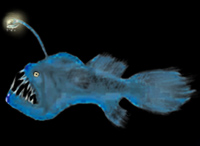Lake Vostock In All Its Glory
Created | Updated Apr 8, 2016
One of the main scientific principles when working with unexplored environments aims to preserve a quantity in its natural condition by not affecting it with the method of observation. This concept was first given weight by physicist Werner Heisenberg. It is around this core value that part of the drama of Lake Vostock is arranged.
Lake Vostock is a freshwater body of water in the East Antarctic, overlaid by over 2000m of ice. The deepest point has been sonographically recorded at 500m, and stands at 230km long and 50km wide. Recent data also shows that there is approximately 50m of sediment on the floor of the lake, which could provide accurate assessment of the changing conditions within the lake over the million or so years after it was covered by ice (which effectively made it a closed ecosystem). It would also be possible to use organisms fossilised in the sediments to determine how genetic material has changed over time.
In 1998, scientists from Russia, the USA and France drilled through 4 kilometres of ice to take a core sample measuring 2083m in length (drilling was halted 120m above the water to prevent contaminant entry). The core sample has yielded interesting clues as to the constituents of the lake. Several species of bacteria, fungi and algae (the oldest carbon-dated at 200,000 years) along with clathrates (crystals with concentrated pressurised gases at their core - a possible energy source) were found. The micro-organisms, showing a low diversity (only the organisms best adapted to the harsh way of life survived), were found to use the minimal amount of energy to function - a survival strategy in imperfect conditions.
The core sample has also proved useful in determining changes in the earth's atmosphere, quantifying over 150,000 years of fluctuations. For example, CO2 concentrations 150,000 years ago measured 195.5 ppmv, whereas 1700 years ago they measured 274.5 ppmv. This goes some way to support the global warming theory (think 'The Day After Tomorrow' story).

Having the technological and logistical capabilities to drill through several kilometres of ice into a lake beneath without contaminating it is a significant barrier to obtaining pure samples. One of the most noteworthy designs to do this involves dropping a bullet-shaped probe complete with different recording instruments into partially drilled ice then sealing the ice above the probe. A cloud of distilled steam is then emitted for decontamination, which also melts the remaining few metres of ice and allows the probe to enter the lake.
So why would we like obtain a pure sample of these waters? Well, for a start they have remain untouched for at least one million years - some researchers argue for a period even longer, perhaps 35-40 million years. Underneath the ice is expected to be an environment that has never been in contact with the rest of the world and has evolved undisturbed, perhaps creating seemingly alien lifeforms.

Any organism in this habitat would have to withstand extreme pressures, cold temperatures (the lowest ever recorded temperature on Earth, -88°C, was recorded at the Vostock research base), depleted nutrients and a lack of sunlight - the latter usually a pre-requisite for energy formation via photosynthesis. But when we take into account the niches already inhabited by micro-organisms - geysers, areas of high radiation etc. - we can certainly theorise that conditions beneath the ice would not be totally uninhabitable and barren.
Another reason that Vostock is of special interest is that it may be of some use in the NASA program. NASA Scientists see Vostock as a testing site for space-exploratory methods that could be employed on other planets, such as the Martian ice caps or the Jovian moon, Europa (the latter is thought to have large oceans beneath its ice-encrusted surface). Vostock may provide the means necessary to determine if Mars' oceans harboured life, giving further fuel to the debate as to whether meteorites exhibiting life-forms from Mars brought life to Earth or were simply contaminated by it when they landed.
